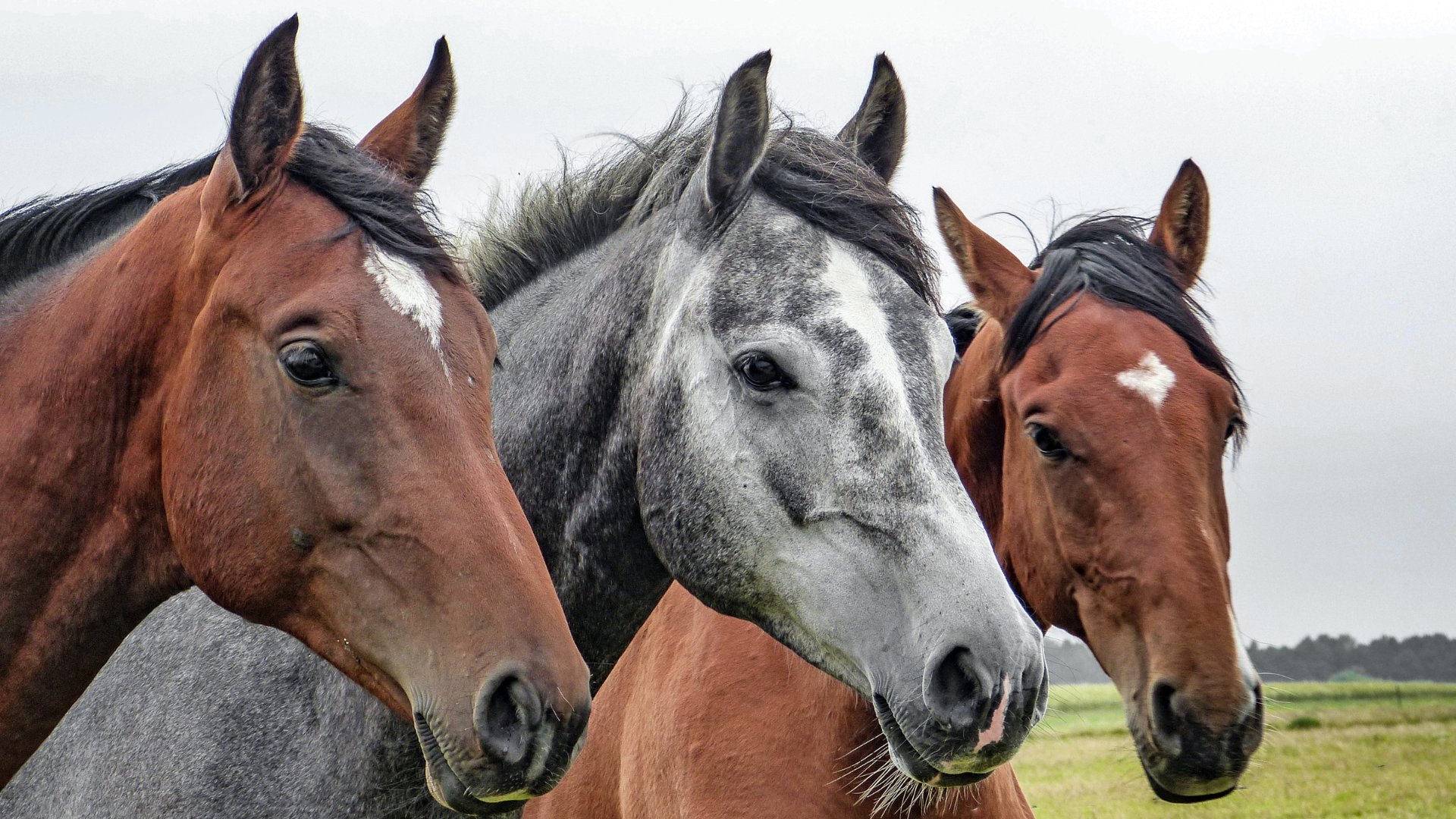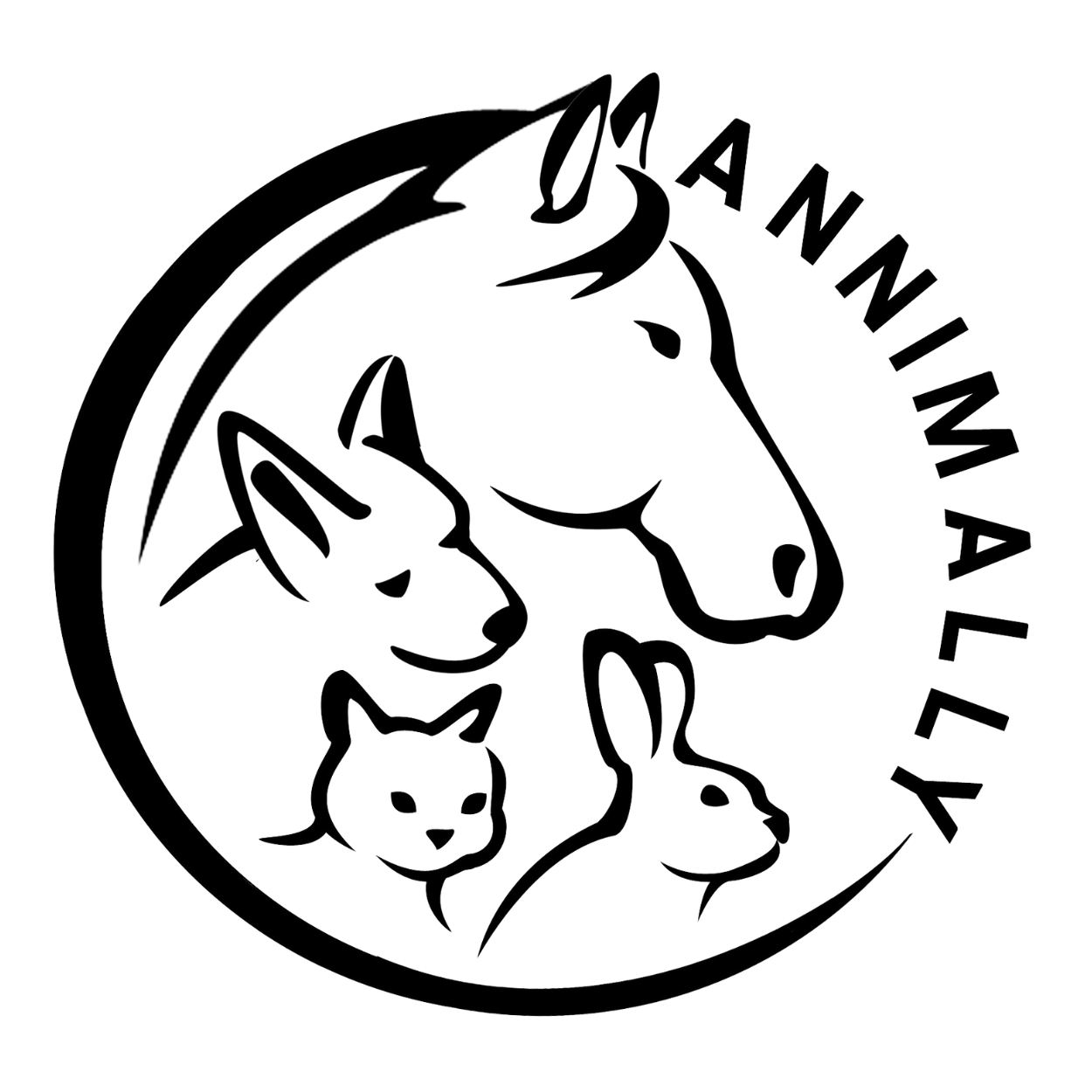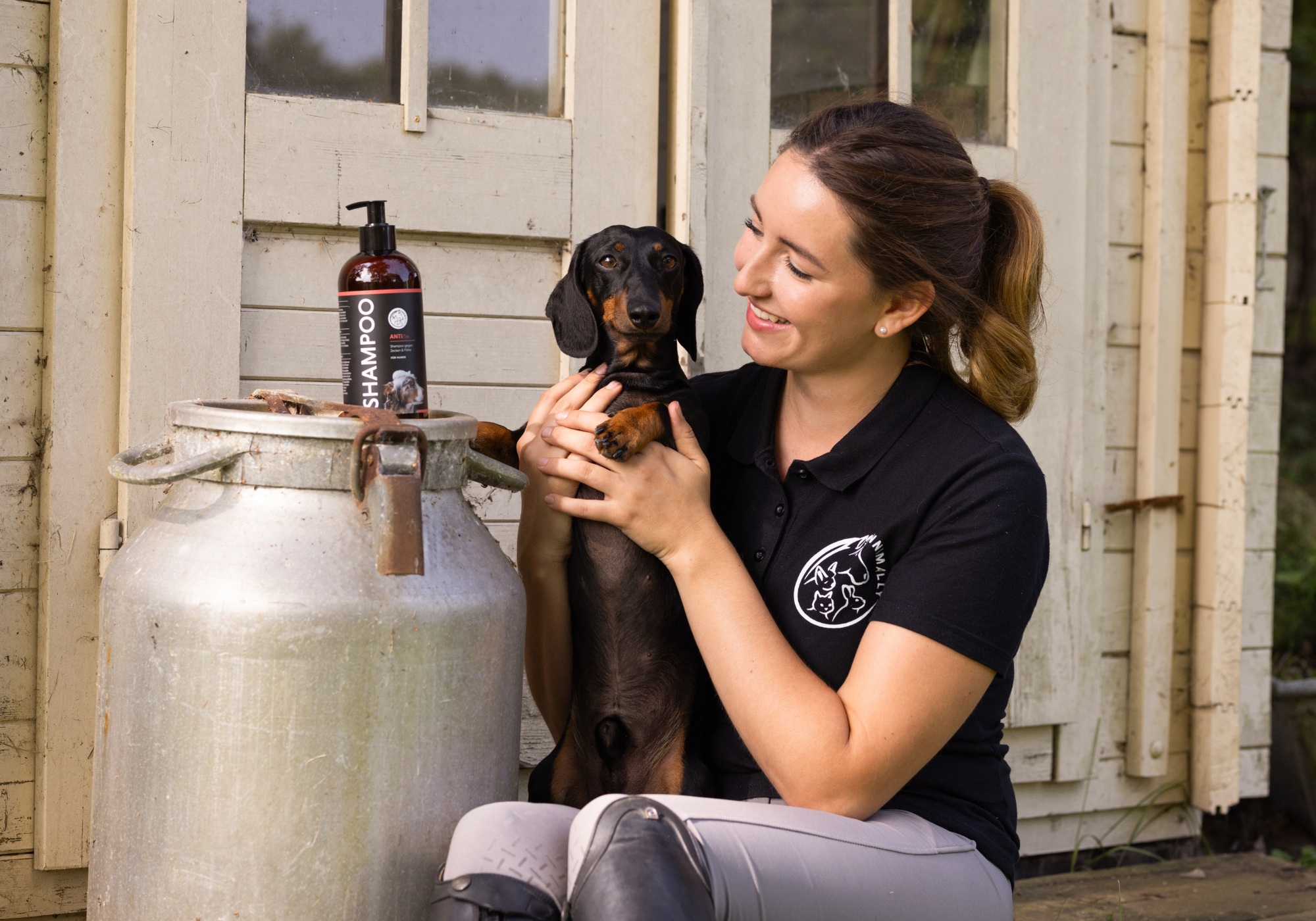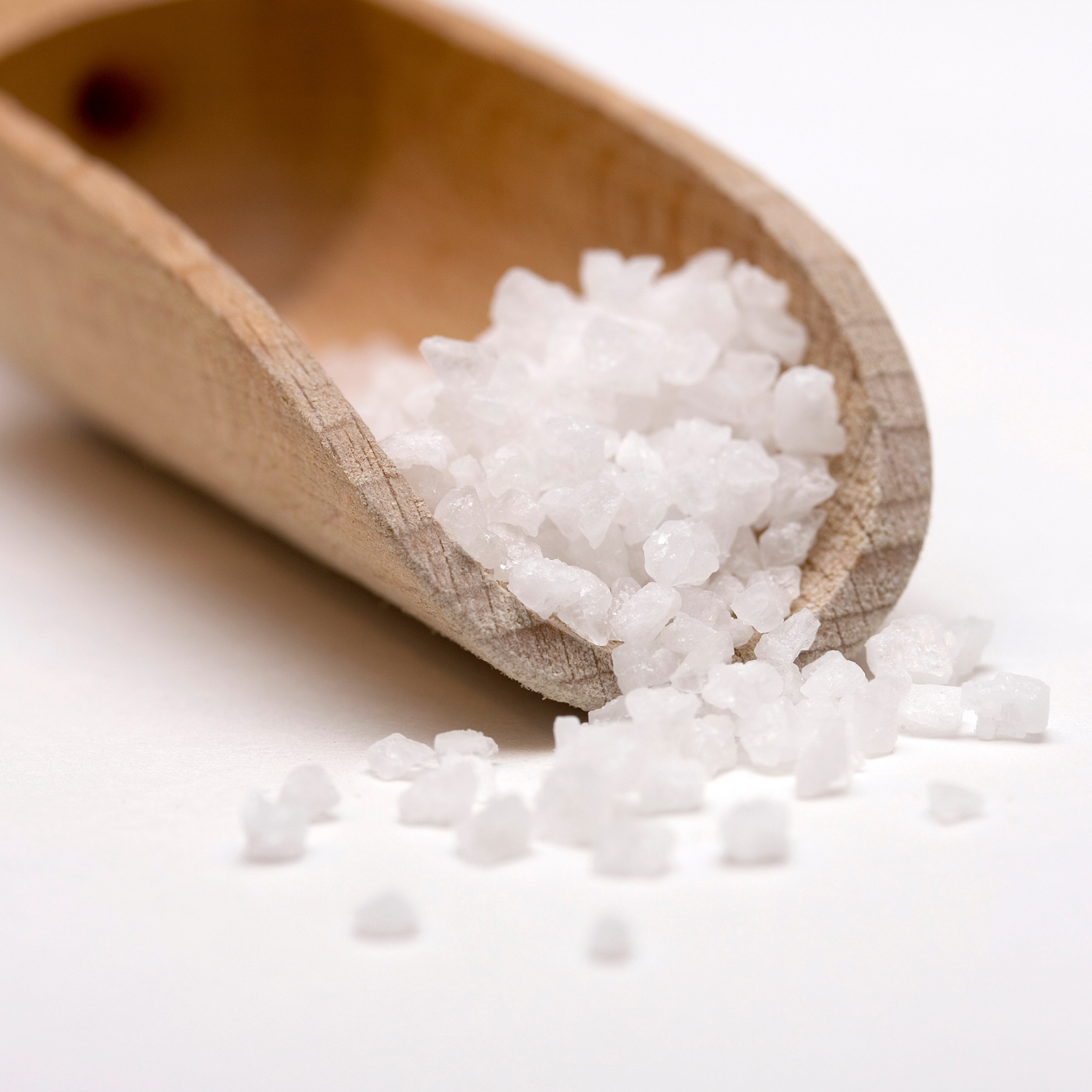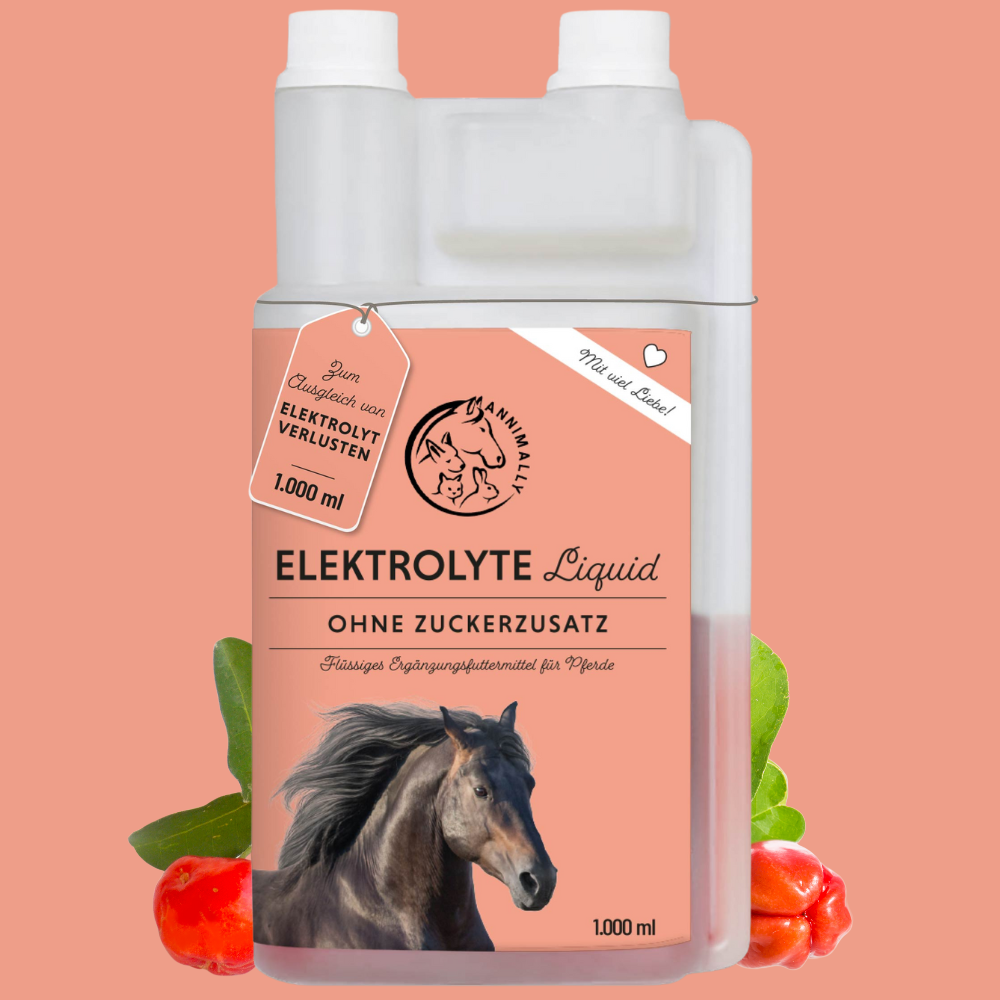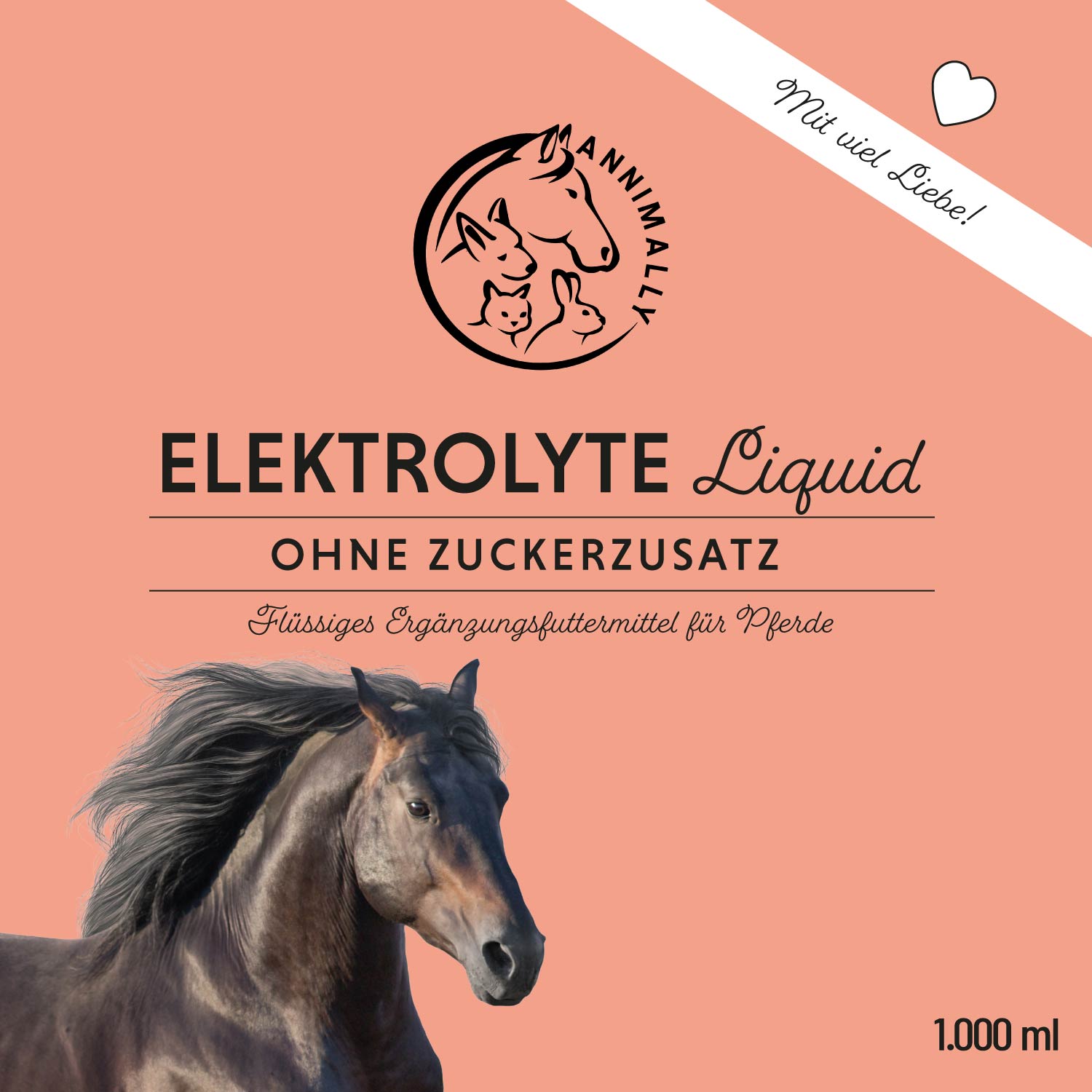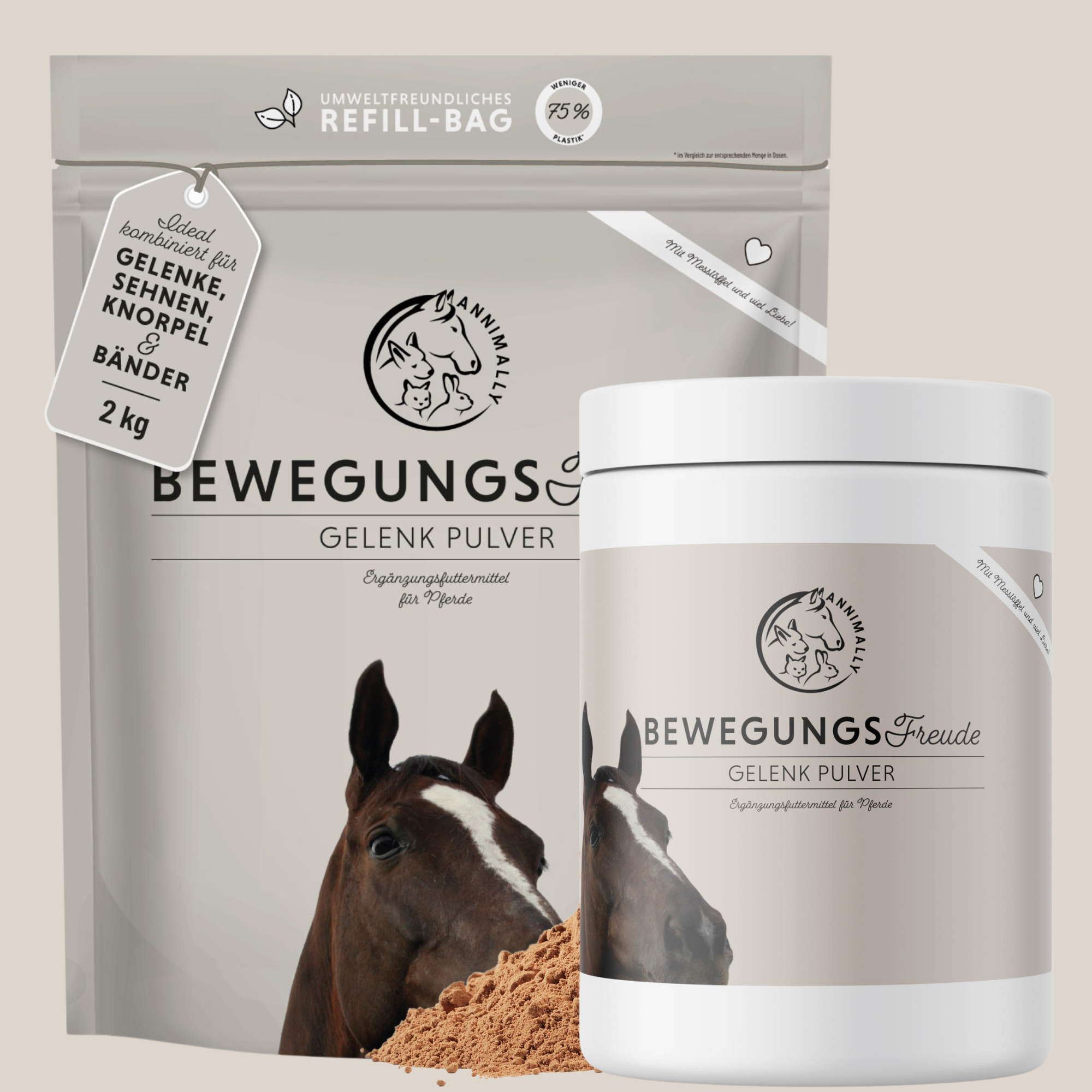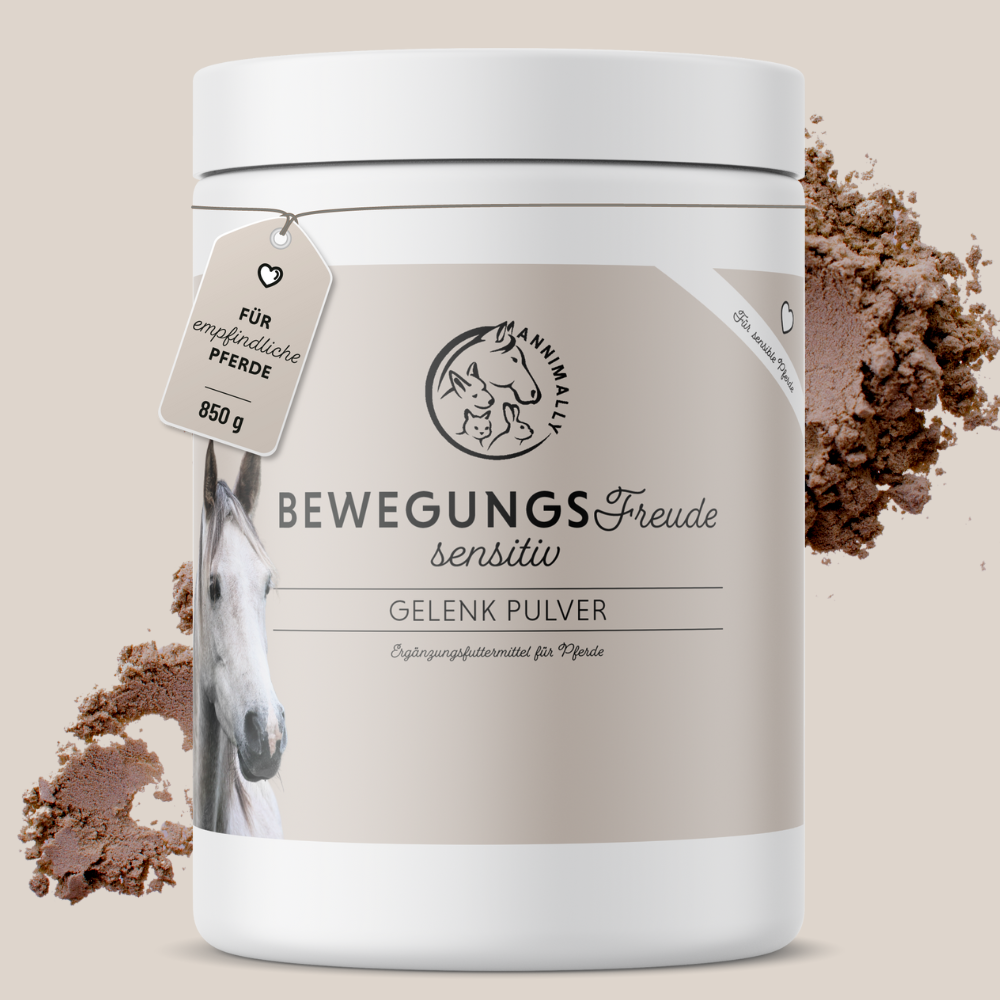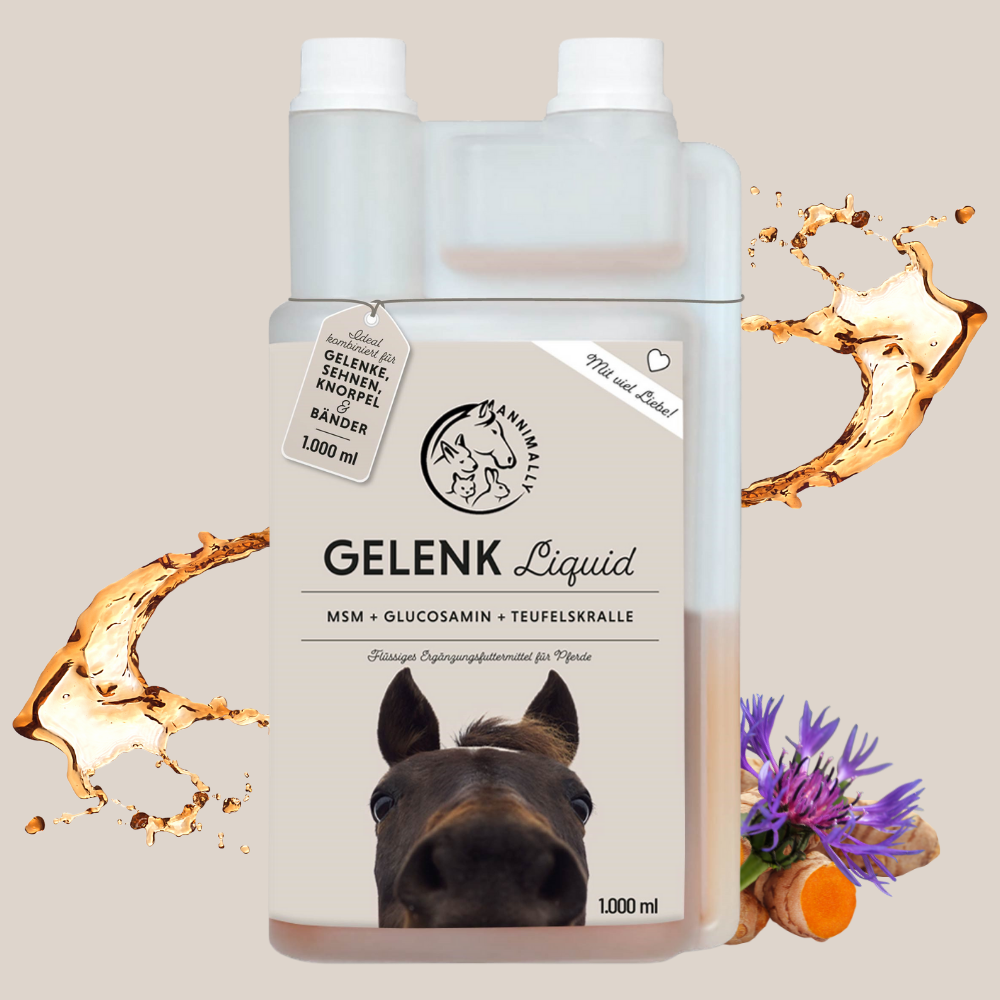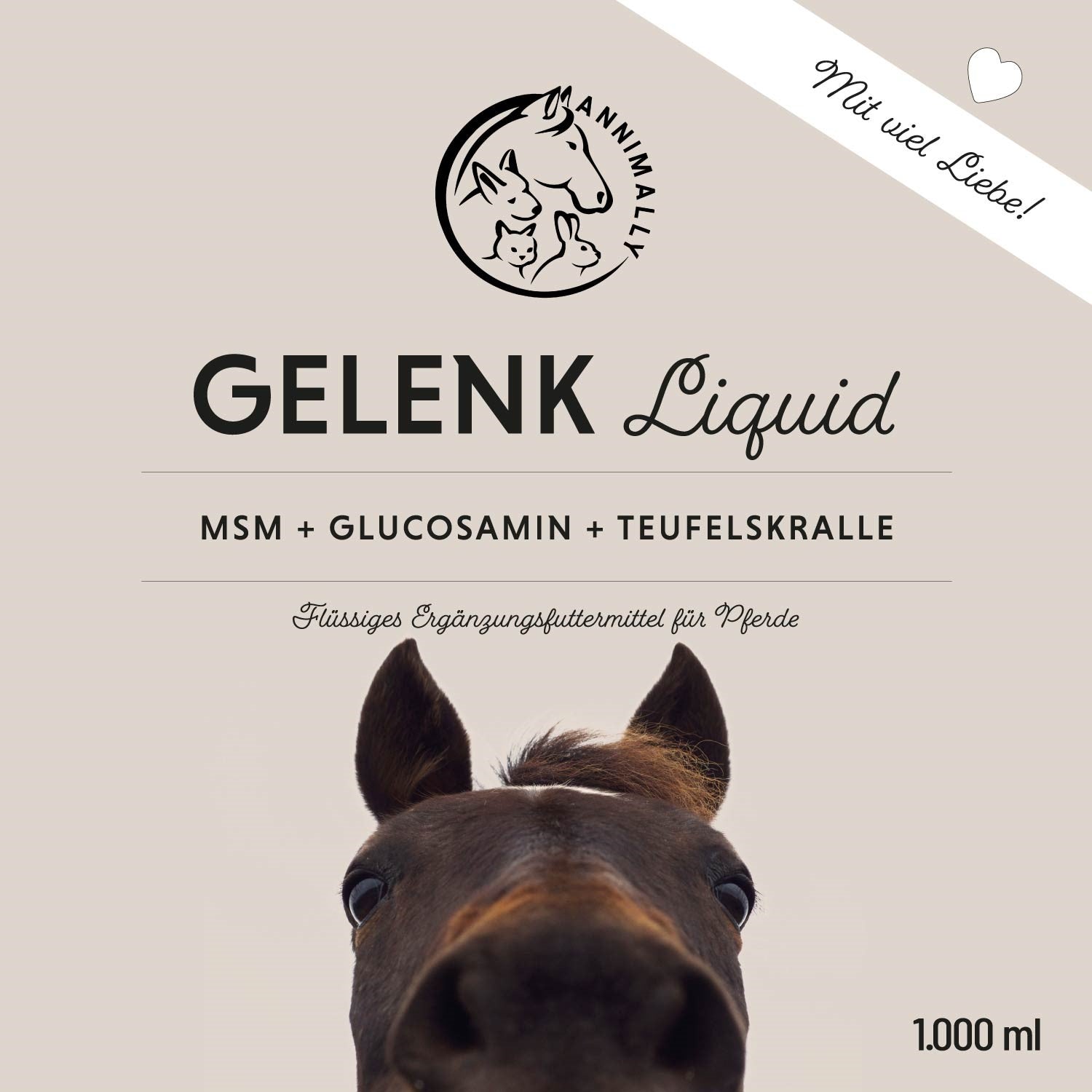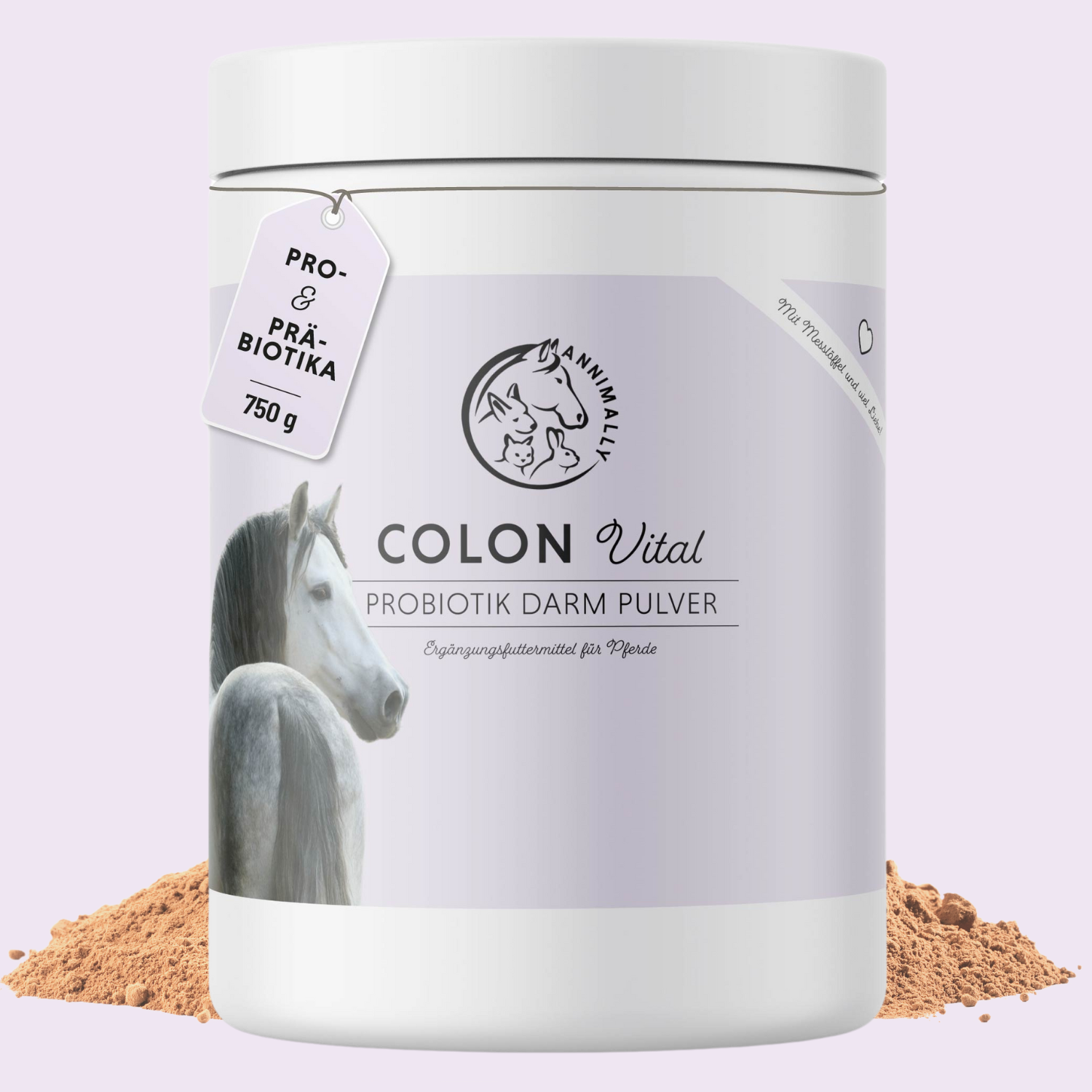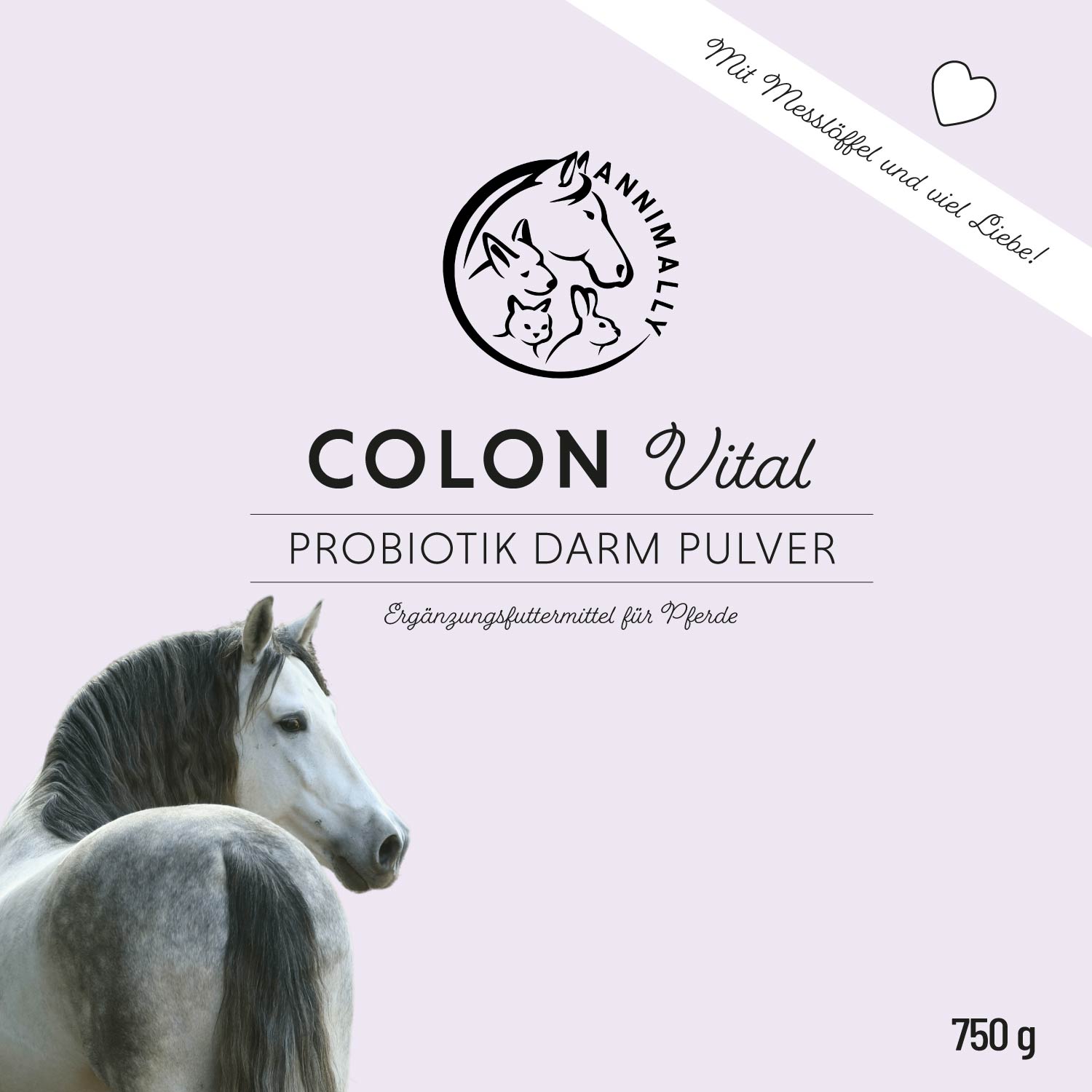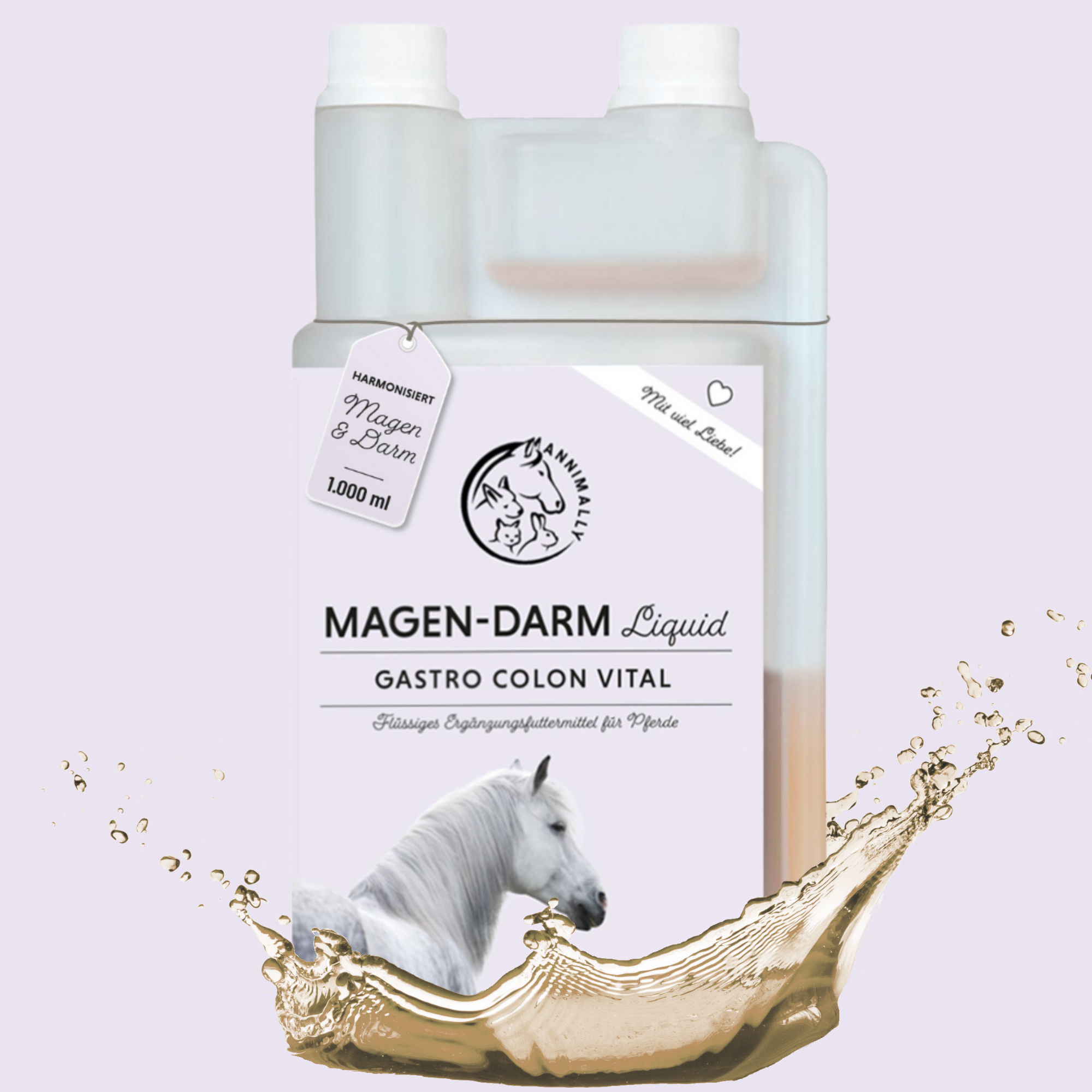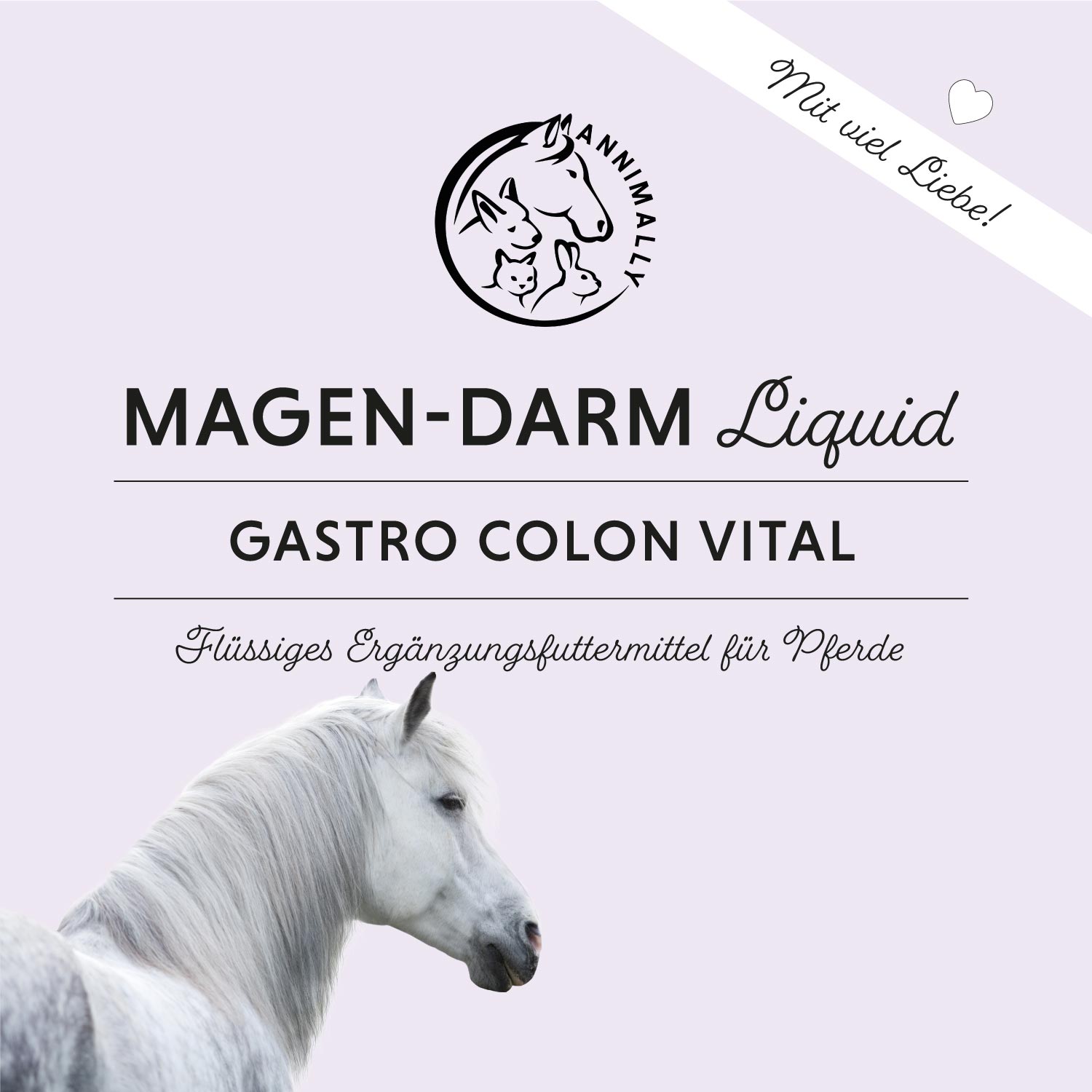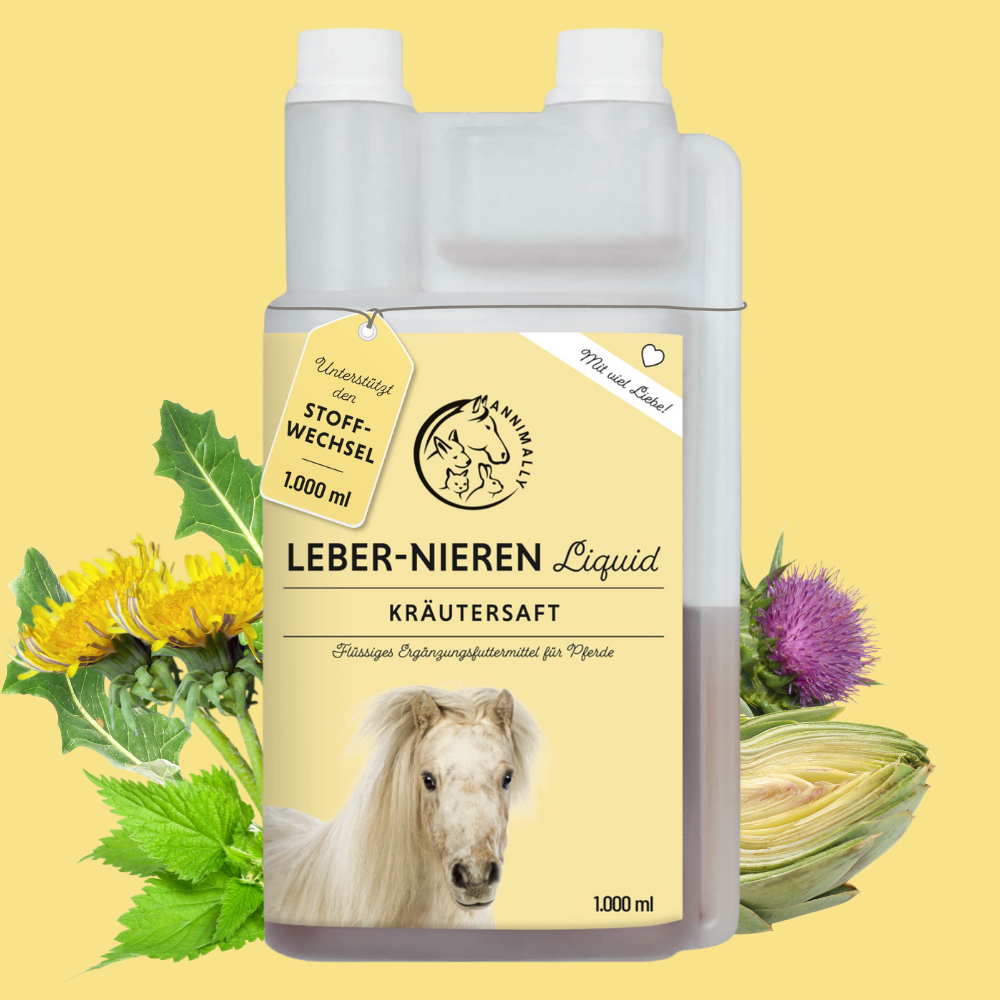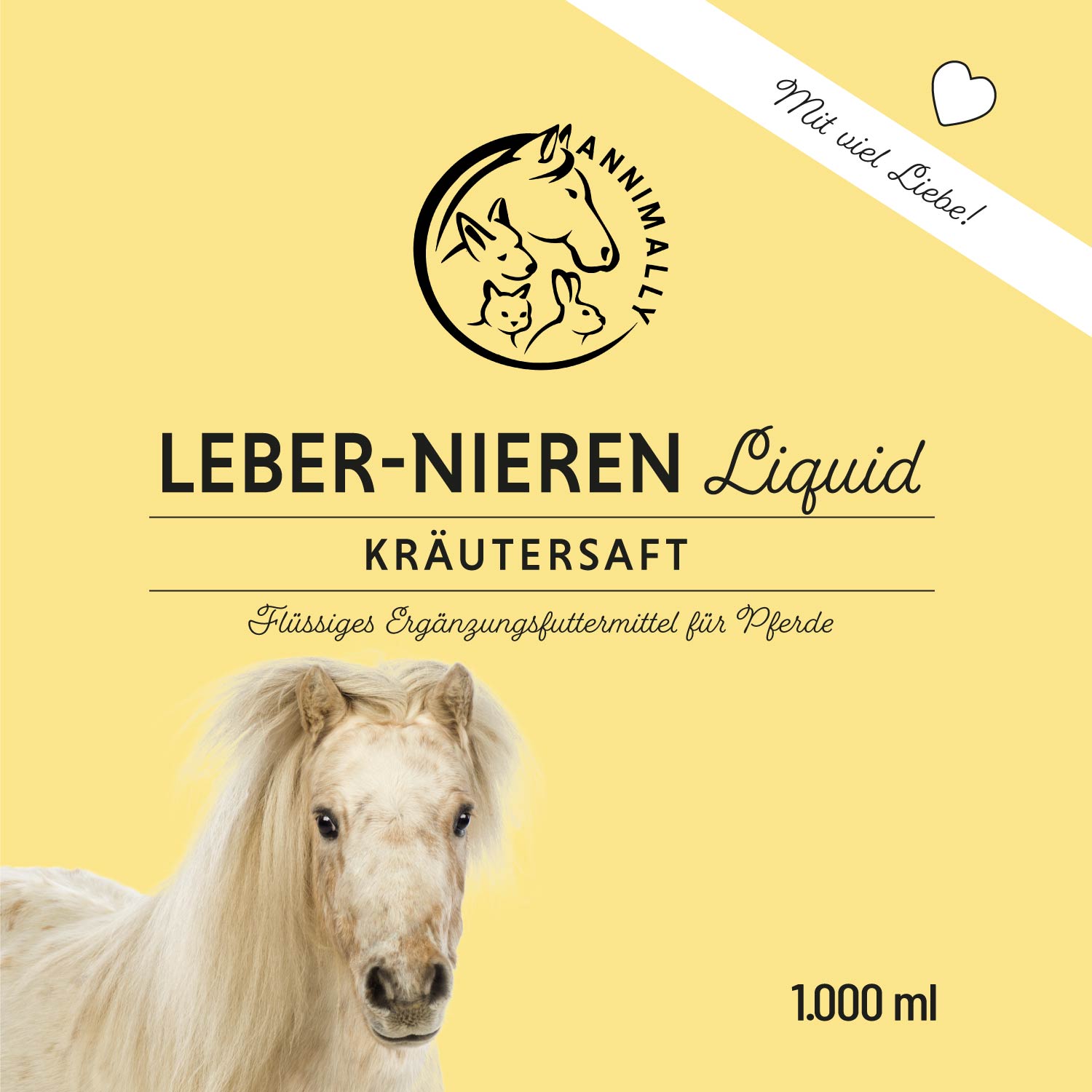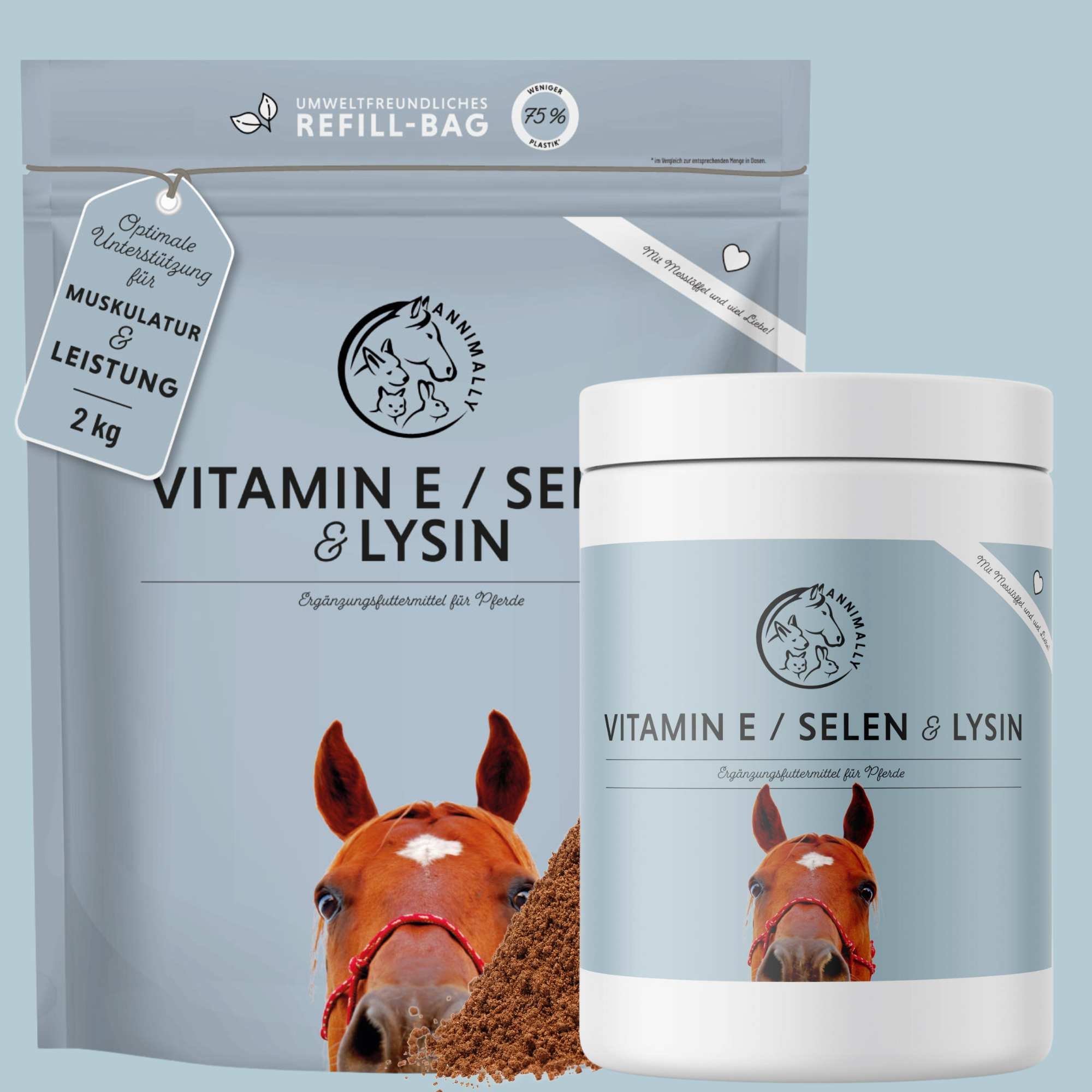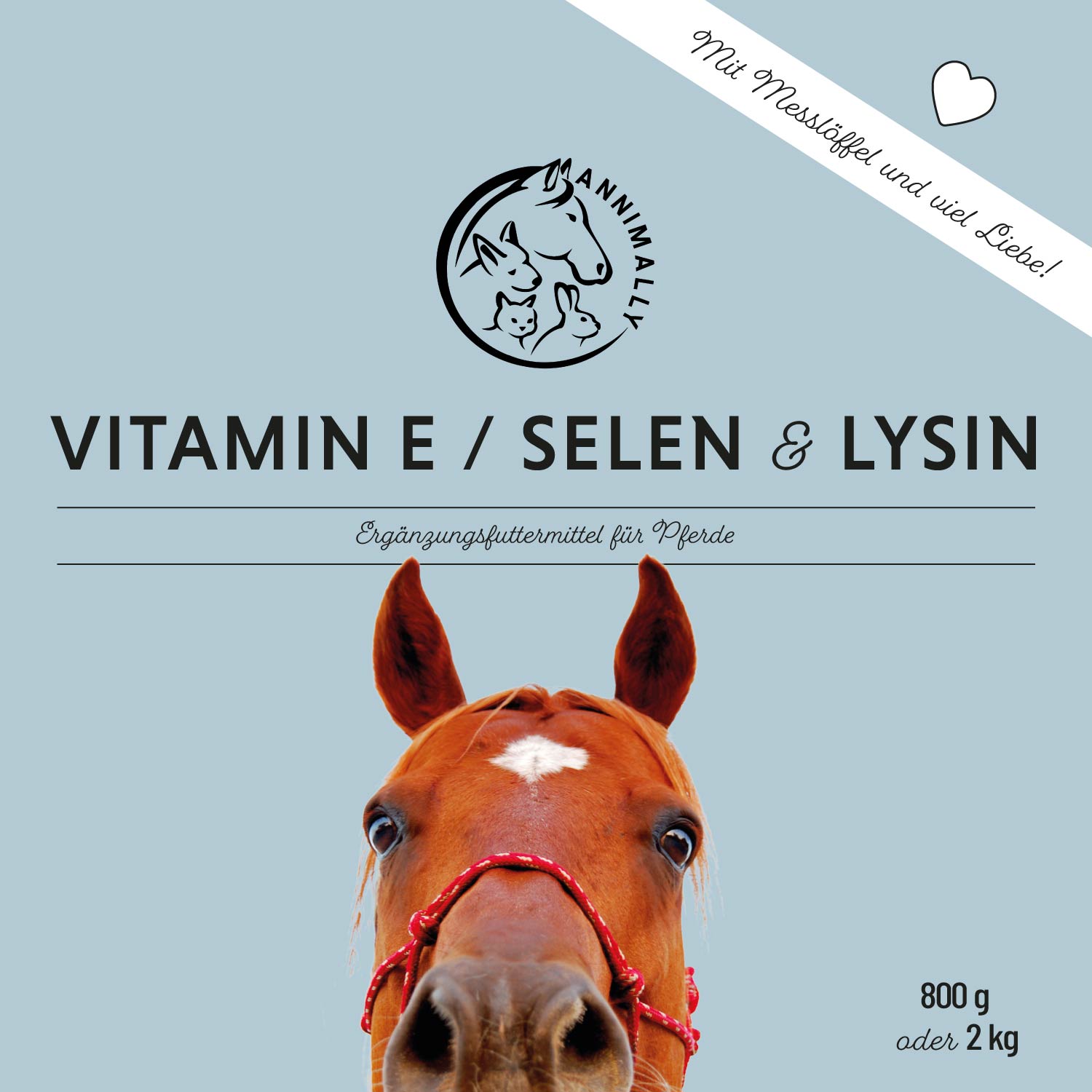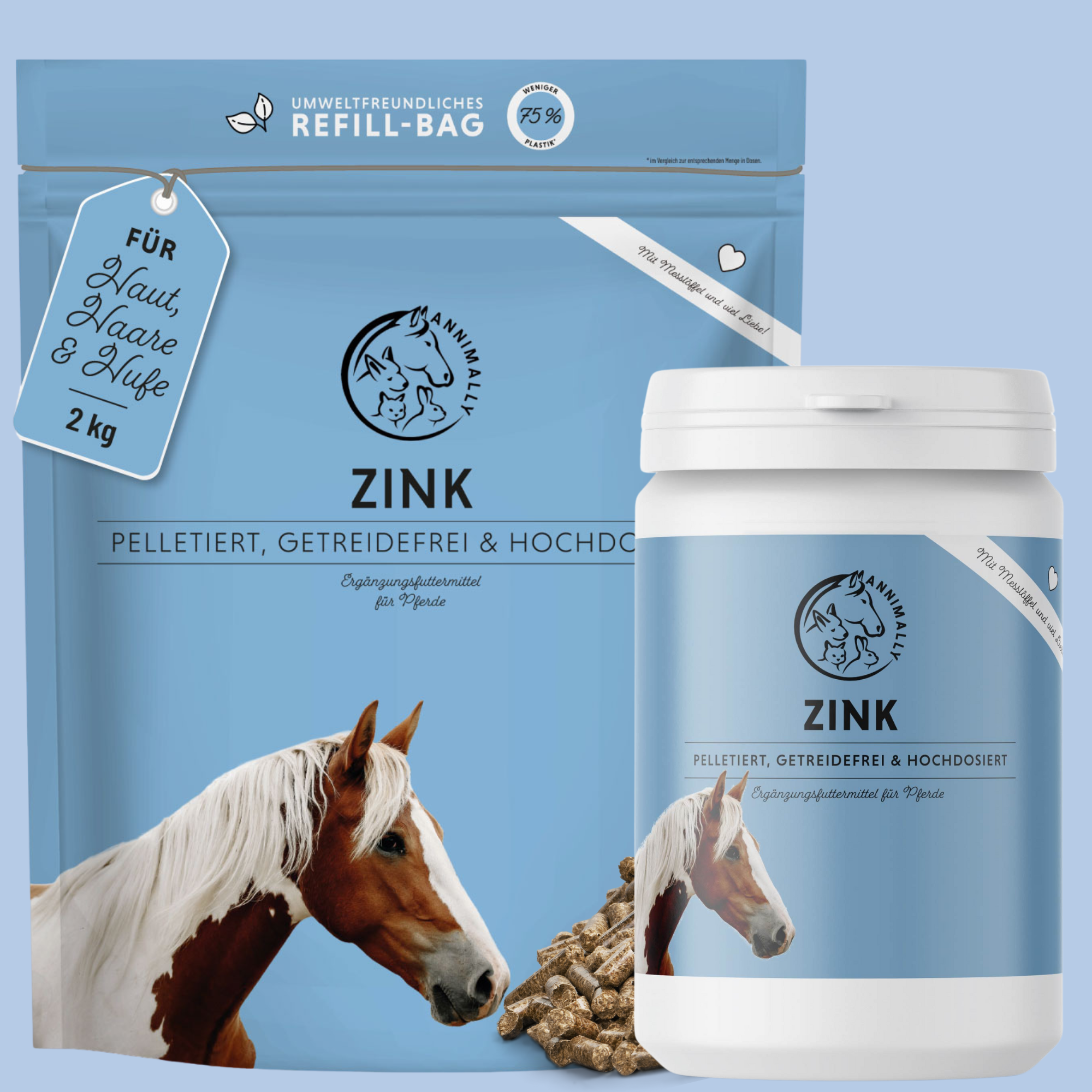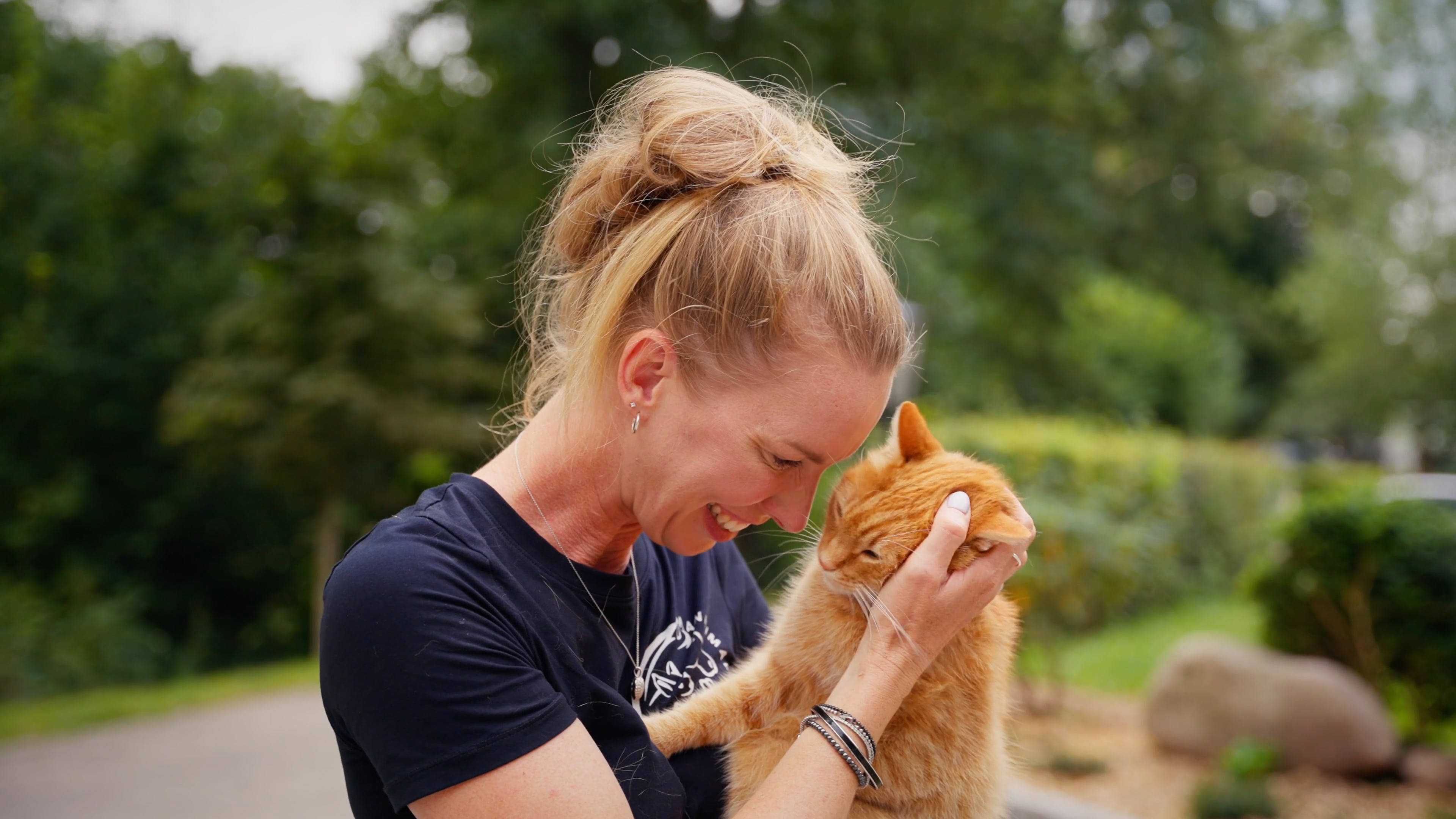Sodium in horses – Why salt is vital for your four-legged friend
If you own or care for a horse, you've probably heard of acid-base balance, electrolytes, or salt licks. But how important is sodium for your horse—and how can you specifically prevent a sodium deficiency in your horse?
In this article, you will learn everything you need to know about sodium, salt, and electrolytes in horses.
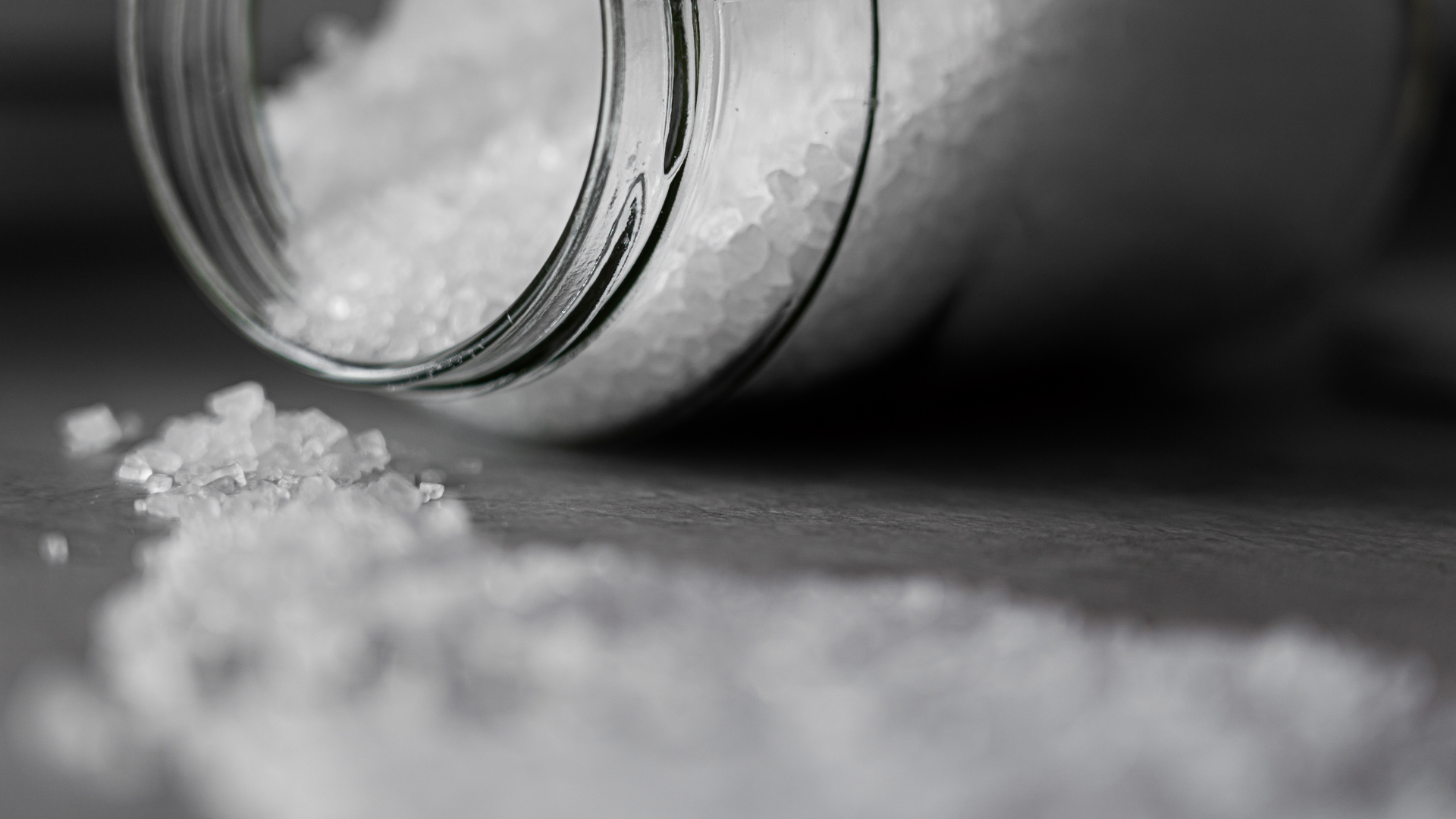
Why does your horse need sodium at all?
Sodium is a vital mineral that performs many functions in your horse's body. Combined with chloride, it forms sodium chloride, or conventional table salt—an essential component of horse feed.
Sodium primarily regulates your horse's water balance and is essential for cellular and nerve function. It also plays a central role in acid-base balance, nerve conduction, and muscle function.
A lack of sodium can have serious consequences for the entire organism.
Horses lose sodium – especially when sweating
Whether in summer with high temperatures, during intensive training, under stress, or during transport – your horse loses not only water but also important electrolytes such as sodium, chloride, potassium, and magnesium. Sodium is particularly lost through sweat.
Did you know that a working horse can lose several liters of sweat per hour? This causes your horse to lose large amounts of minerals—including sodium and chloride—in significantly higher concentrations than in the blood.
Signs of sodium deficiency in horses
A sodium deficiency can develop gradually. The symptoms are often non-specific, but you should be alert if you notice the following changes:
-
Listlessness or fatigue
-
Reduced performance during training
-
Muscle tremors or cramps
-
Refusal of the salt lick
-
Diarrhea
-
Reduced water absorption
-
Poor digestion
-
Unclear metabolic problems
A blood test can also provide clues – this checks your electrolyte status. Sodium and chloride levels are particularly important.
How much sodium does your horse need?
The maintenance sodium requirement is approximately 0.02 g of sodium per kg of body weight per day. For an average 600 kg horse, this translates to approximately 12 g of sodium per day—equivalent to approximately 30 g of table salt (NaCl).
But be careful: During work, heat, or heavy sweating, the salt requirement can quickly double or triple! Even with a high hay or dry matter content in the feed, the requirement increases because the body needs more water to process the food.
Salt lick – is that enough?
Many horses have access to a salt lick in the stable or on the pasture. This is generally good – but not always sufficient.
-
Not every horse licks enough salt
-
The need is often underestimated
-
The loss is especially higher in summer
-
Licking stones are not standardized in their composition
So you should monitor whether your horse is actually using the lick. If you have any doubts, a targeted addition of salts or electrolytes in the feed or drinking water may be helpful.
Sodium and chlorine – a strong team in electrolyte balance
When talking about sodium, chlorine is also a must. Both elements together form sodium chloride, the classic table salt. While sodium is primarily important for water balance and the transmission of stimuli, chlorine plays a central role in regulating acid-base balance and in the production of gastric acid. Especially during heavy sweating, your horse loses large amounts of sodium and chlorine, which is why a balanced balance of both substances is essential.
When choosing electrolytes or mineral feeds, make sure that they also contain sufficient amounts of chloride – because only in combination can the electrolyte balance in the horse's body remain stable.
Electrolytes in horse feed – when and how?
Targeted electrolyte supplementation is particularly recommended during strenuous work, physical activity, or illness. Products with a balanced composition of sodium, chloride, potassium, magnesium, and sometimes calcium help compensate for electrolyte losses and stabilize the acid-base balance.
What is important is:
-
Good bioavailability
-
No unnecessary additives
-
Sufficient access to water
-
Adaptation to the individual horse
Many riders simply add electrolytes to the feed, or on particularly hot days, directly to the drinking water – but only if you are sure that your horse is drinking enough.
The connection with the acid-base balance
A stable acid-base balance is the foundation for health and performance. Sodium contributes to alkaline balance and counteracts over-acidification in the body.
Horses with an unbalanced diet, too much grain, or poor-quality roughage often experience an imbalance here. Stress, medication, or certain illnesses can also disrupt the acid-base balance.
Sodium helps maintain pH balance – which has a positive effect on digestion, metabolism, and even the immune system.
Practical tips
Here are a few tips on how to keep an eye on your horse's sodium levels on a daily basis:
-
Provide salt lick – preferably natural or with analysis
-
Estimate sweat losses – depending on work, weather and temperatures
-
Adjust individual feeding – depending on needs and activity
-
Electrolytes after training – ideally in powder form with water or mash
-
Regular blood tests – in case of unclear symptoms or chronic deficiency
-
Always keep water freely available – especially when administering salt and electrolytes
Natural sources of sodium and co.
In addition to ready-made products, there are also natural sources that you can consider when feeding your horse:
-
Salt licks (Himalayan, sea salt, etc.)
-
Mineral-rich herbs
-
Hay from natural meadows
-
High-quality mineral feed
-
Mash with electrolytes
Even if many products claim to be "natural," always check the actual ingredients and quantities. What works for one horse can quickly lead to an imbalance in another.
Conclusion: Sodium – small but indispensable
Whether in the stable, on the pasture, or during training, sodium is an often underestimated helper in the horse's body. It significantly influences your horse's acid-base balance, water balance, performance, and health.
Make sure your horse is fed according to its needs, monitor sweat loss, and always provide plenty of water. Then you'll be making an important contribution to your horse's health and vitality – day after day.
If you have any questions about electrolyte composition, choosing a suitable mineral feed, or the correct amount of salt in your feed, please feel free to talk to your veterinarian or an equine nutritionist. Your horse will thank you – with energy, vitality, and a balanced organism.
